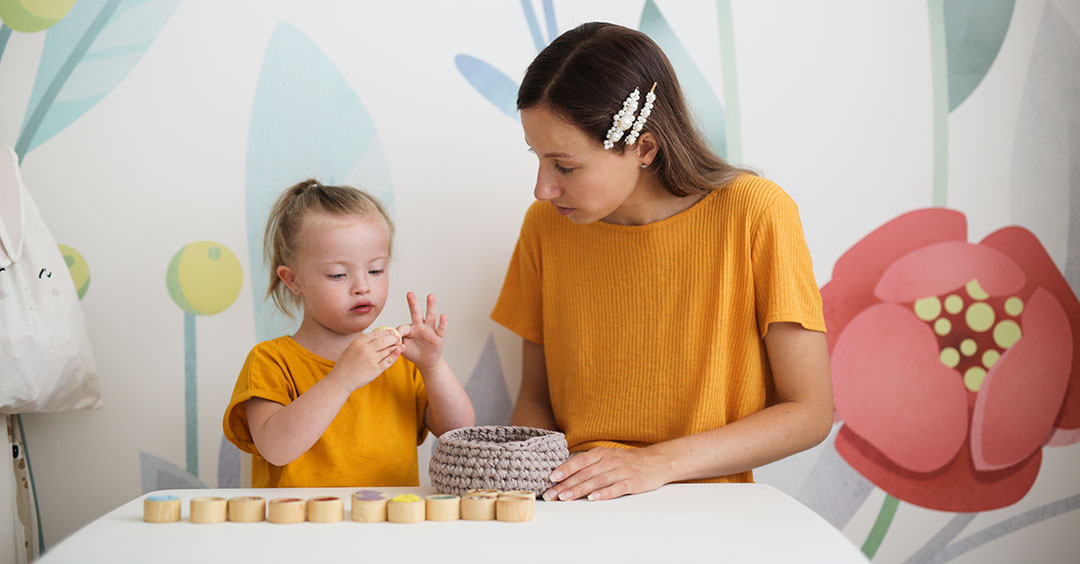The State of New Jersey has very clear expectations for preschoolers with disabilities. In fact, Indicator 7 in our state’s performance plan measures the percent of preschool children aged 3 through 5 with Individualized Education Programs (IEPs) who demonstrate improvement in three key areas: social-emotional skills; early academics, including language and communication; and behavior.
What does that mean for YOUR child? Here is what educators look for when measuring progress:
AREA 1: Positive social-emotional skills, including social relationships.
Relating With Caregivers – Does the child demonstrate regulation and attachment, respond/initiate/sustain interactions, and acknowledge the comings and goings of those around them?
Attending to Other People in a Variety of Settings – Does the child express awareness/caution, respond to/offer greetings, respond to their own name, and know the names of others?
Interacting with Peers – Does the child convey awareness; respond/initiate/sustain interactions; share/cope/resolve conflicts, and play near and with peers?
Participating in Social Games and Communicating with Others – Does the child respond to/initiate/sustain games and back-and-forth communication, demonstrate joint attention, engage in mutual activity, and follow rules of games?
Following Social Norms and Adapting to Change in Routines – Does the child transition between activities, respond to new/familiar settings/interactions, behave in ways that allow participation, and follow simple routines and rules?
Expressing Own Emotions and Responding to Emotions of Others – Does the child show pride/excitement/frustration, manage own emotions, display affection and comfort others?
AREA 2: Acquisition and use of knowledge and skills, including early language, communication and early literacy.
Showing Interest in Learning – Does the child persist, show eagerness and awareness, imitate/repeat actions, explore environment?
Attending to Other People in a Variety of Settings – Does the child figure things out, use trial and error, remember steps or actions and execute them with intention, and experiment with new/known actions?
Engaging in Purposeful Play – Does the child show early awareness and exploration, use objects according to function, play by building, pretending, organizing, and by expanding play scenarios and roles?
Understanding Pre-Academics and Literacy – Does the child notice differences or associations among things, demonstrate matching/sorting/labeling by size/color/shape/numbers/function, interact with books and pictures, and practice early writing and reading?
Acquiring Language to Communicate – Does the child learn and use sounds, words, and sentences with increasing complexity including sign language and augmentative and alternative communication (AAC)?
Understanding Questions Asked and Directions Given – Does the child respond to gestures/verbal requests, understand meaning of increasingly complex words/questions/directions, know and state details about self (e.g., name, age)?
AREA 3: Use of appropriate behaviors to meet their needs.
Moving Around and Manipulating Things to Meet Needs – Does the child move with increasing control and purpose (e.g., reach, roll, crawl, walk, run, climb) to navigate the environment – with accommodations as needed, manipulate objects/tools (e.g., crayons, scissors, switches, fragile items) with increasing control?
Eating and Drinking with Increasing Independence – Does the child suck/swallow, chew, bite, finger feed, use utensils, hold bottle, drink from cup, show growing independence with amount/type of food eaten, access food and feed self?
Dressing and Undressing with Increasing Independence – Does the child assist with dressing, take off/put on shoes and clothes, undo/do fasteners?
Diapering/Toileting and Washing with Increasing Independence – Does the child lift legs for diaper change, sit on potty, wash hands, brush teeth, help with bathing…
Communicating Needs – Does the child indicate hunger/need for sleep/diaper change, express discomfort/hurt, request or reject food, and express choice/preferences?
Showing Safety Awareness(*) – Does the child avoid dangers (e.g., putting things in mouth, touching hot stove), follow safety rules across settings and situations?
(*) This awareness is less evident in very young children.


 .
.